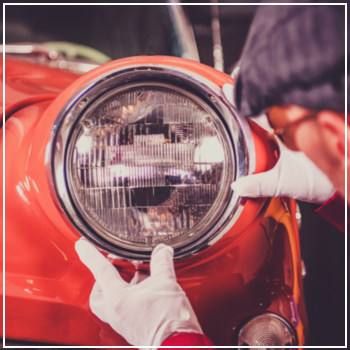However, restoring an older vehicle isn't without its hurdles. One major issue is sourcing parts—especially for cars that were built before modern manufacturing standards. Another common problem is rust, especially in vehicles not made with galvanized steel. If not addressed early, this can quickly turn your dream into a nightmare. Plus, budgeting is essential; what starts as a small project can easily become a financial commitment if not planned carefully. Without proper planning, your classic car might end up gathering dust in the garage instead of being displayed at a car show. That’s why it's important to approach the restoration with a clear strategy and, when needed, seek help from experienced professionals. Here are some key considerations to keep in mind as you begin your journey. Before jumping into the restoration process, take time to research and find the right vehicle. Look into different eras, models, and body styles to find something that speaks to you. Once you've narrowed down your options, don’t rush into a purchase. Instead, schedule a detailed inspection to check for signs of rust, damage, and overall condition. Understanding the car's history is also crucial—this will help you anticipate potential issues down the line. After selecting a car, start researching where you can source the necessary parts. Some components may be available through salvage yards, online marketplaces, or specialty dealers. Being prepared with this knowledge will save you time and money later on. When it comes to parts, authenticity is often a priority for purists. However, in many cases, original equipment manufacturer (OEM) parts may be scarce or expensive. In such situations, you might need to consider using high-quality aftermarket parts that offer similar performance and durability. While some enthusiasts prefer to stick strictly to original components, others find that a mix of OEM and aftermarket parts can be both practical and effective. It's all about balance. You want to maintain the car's original character while ensuring it runs reliably. Be open to making smart compromises based on availability, cost, and your restoration goals. Your skill level will play a big role in how much you can do on your own. Simple tasks like painting, replacing interior trim, or installing new upholstery can be manageable for DIYers. However, complex systems like the engine, transmission, and exhaust require specialized knowledge and tools. These areas are best left to trained professionals who can ensure everything is done safely and correctly. Before starting, make a list of what you plan to handle yourself and what will need expert help. This will help you stay organized and avoid costly mistakes. One of the biggest challenges in car restoration is managing your budget. Many people underestimate the costs involved, leading to frustration and delays. From parts and labor to unexpected repairs, expenses can add up quickly. To avoid this, set a realistic budget upfront and build in a buffer for surprises. Consider how much you’re willing to spend on the car itself, parts, and labor. If you're not sure about your skills, factor in professional services from the beginning. Planning ahead can help you stay on track and avoid getting stuck in a never-ending project. If you're looking for expert help with your classic car restoration or rust removal, contact DaSilva’s Auto Body today. Our team has the experience and tools to bring your dream vehicle back to life. Let us help you turn your vision into reality. Custom Aluminum Wheelchair,Electric Wheelchair,Hoveround Electric Wheelchair,Heavy Duty Electric Wheelchair Ningbo Baichen Medical Devices CO.,ltd , https://www.bcscooter.com Restoring a vintage or antique car is more than just a project—it's a passion for many car lovers. It gives you the chance to bring a piece of history back to life and enjoy the satisfaction of seeing it run smoothly again. Whether it's a classic muscle car from the '60s or a timeless European model, the process can be both challenging and rewarding.
Restoring a vintage or antique car is more than just a project—it's a passion for many car lovers. It gives you the chance to bring a piece of history back to life and enjoy the satisfaction of seeing it run smoothly again. Whether it's a classic muscle car from the '60s or a timeless European model, the process can be both challenging and rewarding.Choosing the Right Car
Understanding Parts and Options
Deciding What You Can Do Yourself
Setting a Realistic Budget